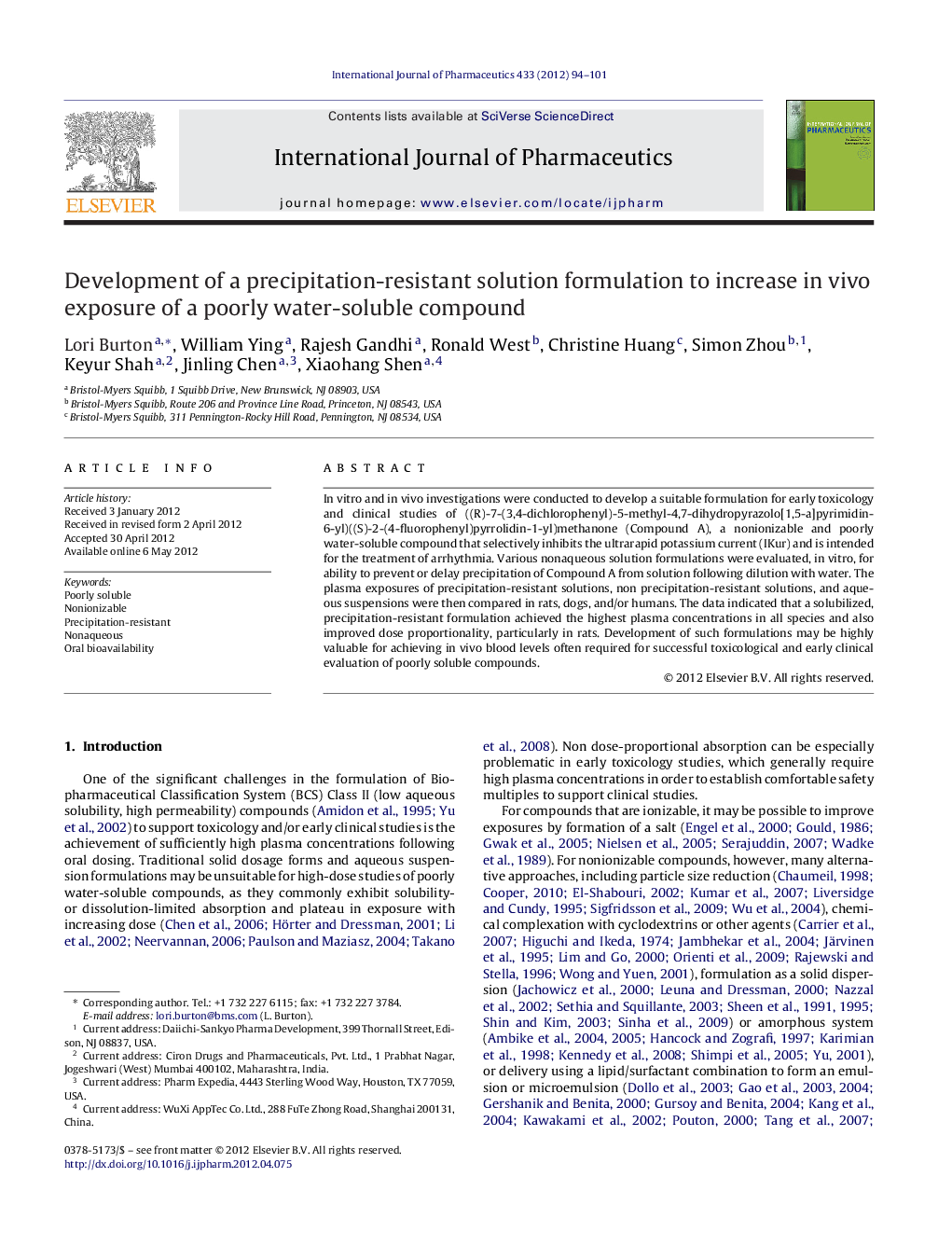| Article ID | Journal | Published Year | Pages | File Type |
|---|---|---|---|---|
| 2502908 | International Journal of Pharmaceutics | 2012 | 8 Pages |
In vitro and in vivo investigations were conducted to develop a suitable formulation for early toxicology and clinical studies of ((R)-7-(3,4-dichlorophenyl)-5-methyl-4,7-dihydropyrazolo[1,5-a]pyrimidin-6-yl)((S)-2-(4-fluorophenyl)pyrrolidin-1-yl)methanone (Compound A), a nonionizable and poorly water-soluble compound that selectively inhibits the ultrarapid potassium current (IKur) and is intended for the treatment of arrhythmia. Various nonaqueous solution formulations were evaluated, in vitro, for ability to prevent or delay precipitation of Compound A from solution following dilution with water. The plasma exposures of precipitation-resistant solutions, non precipitation-resistant solutions, and aqueous suspensions were then compared in rats, dogs, and/or humans. The data indicated that a solubilized, precipitation-resistant formulation achieved the highest plasma concentrations in all species and also improved dose proportionality, particularly in rats. Development of such formulations may be highly valuable for achieving in vivo blood levels often required for successful toxicological and early clinical evaluation of poorly soluble compounds.
Graphical abstractFigure optionsDownload full-size imageDownload high-quality image (149 K)Download as PowerPoint slide
